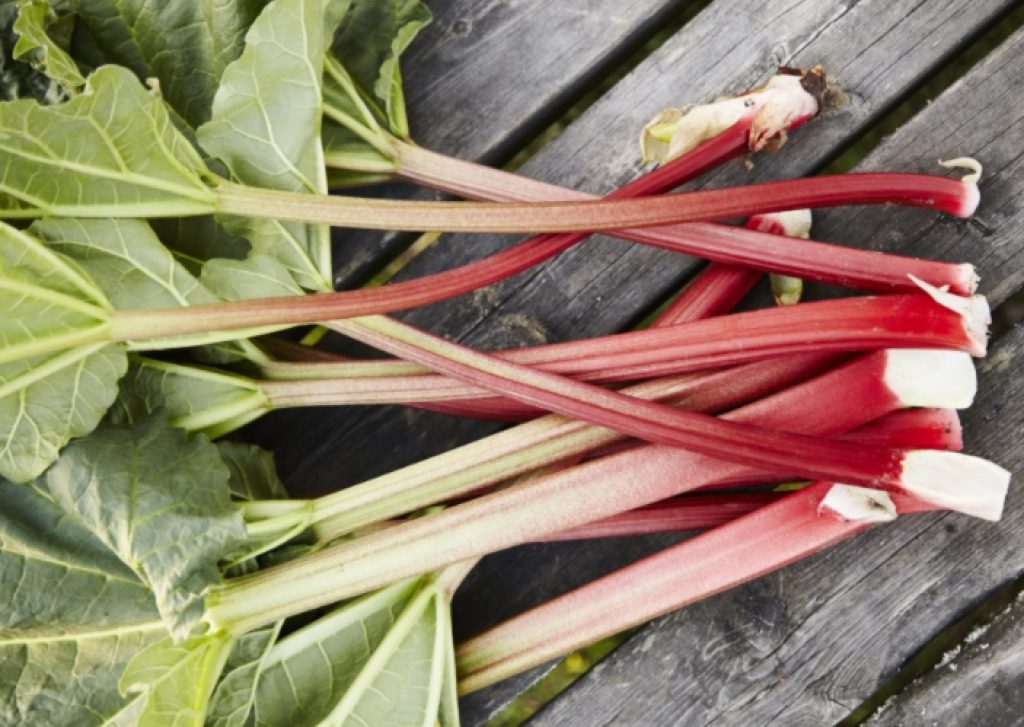The crispy fleshy raw or desserts and crumbles with rhubarb cooked in sugar are a delicacy to many people. Can you share rhubarb with your cat?
Belonging to the knotweed or smartweed-bucket family, Polygonaceae, rhubarb is a vegetable from several genus Rheum species cultivars. Unlike other vegetables, only the stalks (petioles) are edible because their leaves are very high in anthrone glycosides and oxalic acid.

There are many edible rhubarb cultivars, with some like Grandad’s Favourite, Reed’s Early Superb, Timperley Early, and Stein’s Champagne, having gained the Royal Horticultural Society’s Award of Garden Merit.
Is it safe for cats?
While they are a good source of dietary fiber, have vitamins C and K, manganese, and calcium, rhubarb is toxic to cats, dogs, and horses are high in soluble oxalates.
Therefore, don’t feed rhubarb to your kitties because the soluble oxalates (mainly salts of sodium and potassium oxalates) will be rapidly absorbed into the body, where they will bind with calcium in the blood, causing acute hypocalcemia.
Also, as they bind with calcium, they form an insoluble residue that will hurt your cat’s kidney, and severe exposure may cause kidney failure.
If your cat eats rhubarb, typical symptoms expected include those of hypocalcemia (low calcium in blood serum), and they are:
- Salivation
- Weakness and malaise
- Gastrointestinal symptoms like diarrhea, vomiting, and reduced appetite
- Kidney failure
- Tremors
- Incoordination
- Disorientation and restlessness
- Coma
While soluble oxalate poisoning isn’t rampant in small pets like your cats and dogs, especially from eating plant material (which they don’t usually eat), your cat can suffer toxicity, mostly if they eat rhubarb leaves, which are higher in the soluble oxalates.
However, if you suspect your cat has eaten rhubarb and has these symptoms or anything abnormal, talk to your vet for further diagnosis and treatment.
Soluble and insoluble oxalates
it is good you differentiate the difference that rhubarb toxicity mechanism is different from that of plants with insoluble calcium oxalates like umbrella plant, sweetheart vine, peace lilies, dumbcane, calla lilies, pothos, Mother-in-law’s tongue, hunter’s robe, elephant’s ears, and so on.
Protecting rhubarb
if you grow rhubarb in your garden, it is good to protect them from your cats since they may eat them. These animals do nibble different greeneries include grass and ornamental plants. Some ways to prevent accidental ingestion include:
- Having a cat-proof fence
- Using various cat deterrents and repellents
- Training your cat not to eat plants
- Providing them with alternative safe cat grasses
- Minimizing boredom as it encourages plant eating
Other plants with soluble oxalates
Besides rhubarb, star-fruits, shamrock plant, Rumex spp. (sour dock, curly dock or dock), lambs quarters, greasewood, Halogeton, among others, have insoluble oxalates.
